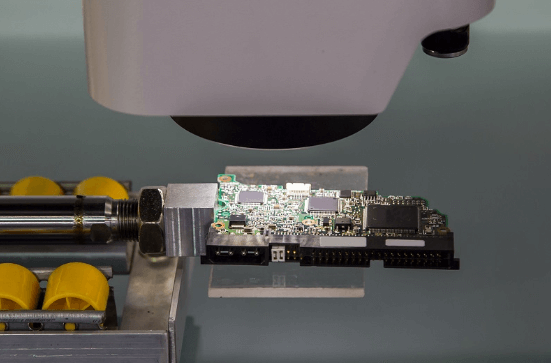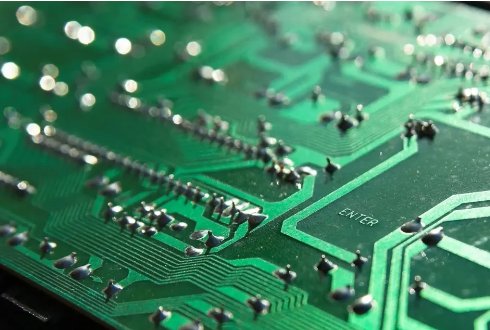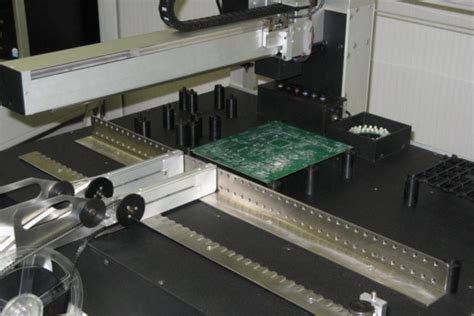Trackwise Shatters Records with 26-Meter FPC for Solar UAV Systems

Key Takeaways
When exploring advancements in aerospace technology, you’ll find that PCB manufacturing plays a pivotal role in enabling lightweight, high-performance systems. Trackwise’s 26-meter flexible printed circuit (FPC) exemplifies how innovation in PCB manufacturing companies can redefine industry standards—particularly for solar-powered UAVs. By replacing traditional wiring harnesses with multilayer FPCs, 60% weight reduction is achieved, directly enhancing flight efficiency and operational range.
"Flexible circuits are revolutionizing aerospace design by integrating power and signal distribution into a single, lightweight solution," notes an industry expert.
Here’s how this breakthrough impacts the PCB manufacturing business:
| Traditional Wiring | Trackwise FPC |
|---|---|
| Bulky, multi-component | Single 26-meter circuit |
| Complex installation | Simplified integration |
| Higher PCB manufacturing cost | Optimized material usage |
The integration of over 50 circuits into wing structures demonstrates how advanced PCB manufacturing techniques eliminate redundancies while improving reliability. For UAV operators, this translates to lighter aircraft systems capable of longer missions—a critical advantage for solar-powered applications.
As you evaluate aerospace innovations, consider how strategic partnerships with specialized PCB manufacturers can accelerate development cycles and reduce system complexity. The shift toward FPCs underscores a broader trend: optimizing PCB manufacturing cost while maximizing performance is no longer optional—it’s essential for next-generation aviation.
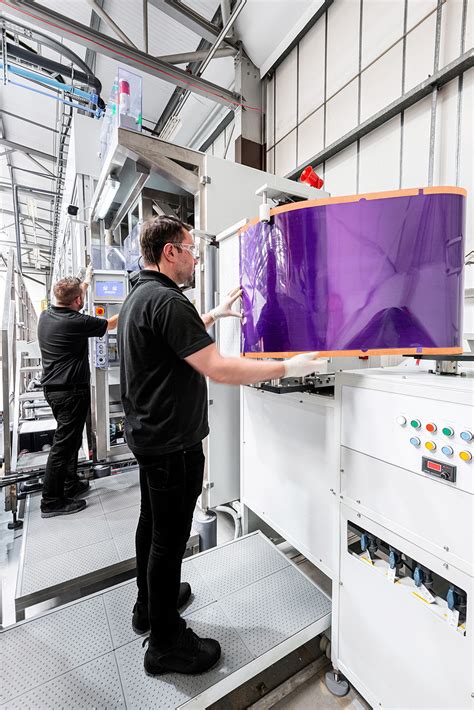
Trackwise 26M FPC Solar UAV Breakthrough
When optimizing aerospace systems, every gram matters. Trackwise’s groundbreaking 26-meter flexible printed circuit (FPC) redefines how solar-powered UAVs manage power and signal distribution across their wings. By replacing bulky traditional wiring harnesses with a single multilayer FPC, the innovation slashes system weight by 60%—a critical advantage for energy-efficient flight. This leap in PCB manufacturing showcases how advanced circuit designs can transform aerospace engineering, particularly when PCB manufacturing companies prioritize lightweight, high-density solutions.
The FPC integrates over 50 circuits into a unified structure, eliminating miles of copper wiring while maintaining reliability. For engineers, this means simplified assembly and reduced PCB manufacturing cost through streamlined production processes. What makes this breakthrough pivotal for the PCB manufacturing business is its scalability: the same principles apply to drones, satellites, or even next-gen electric aircraft. By pushing the limits of flexible circuitry, Trackwise demonstrates how rethinking material science and manufacturing precision can unlock performance barriers—proving that innovation in PCB manufacturing isn’t just about smaller components, but smarter system-level integration.
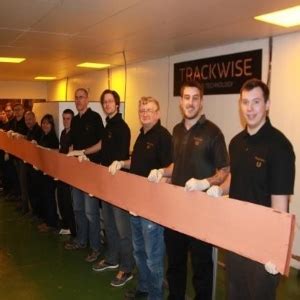
60% Weight Reduction in Aerospace Wiring
When designing aircraft systems, every gram counts. Traditional wiring harnesses—bulky, rigid, and prone to failure under stress—have long been a bottleneck for achieving optimal weight efficiency. This is where innovations in PCB manufacturing redefine possibilities. By replacing conventional copper wire bundles with multilayer flexible printed circuits (FPCs), aerospace engineers can slash wiring weight by 60% while maintaining—or even enhancing—performance.
Leading PCB manufacturing companies now produce ultra-thin, high-density circuits that integrate 50+ conductive pathways into a single, lightweight layer. These FPCs eliminate the need for redundant insulation materials and connectors, freeing up critical space in wing structures. For solar-powered UAVs, which rely on maximizing energy efficiency, this weight reduction translates directly to extended flight times and improved payload capacity.
However, transitioning to advanced FPCs isn’t just about technical feasibility—it’s a strategic decision for the PCB manufacturing business. While initial PCB manufacturing costs may rise due to specialized materials and precision engineering, the long-term savings from reduced fuel consumption, simplified assembly, and lower maintenance far outweigh upfront investments. When you prioritize lightweighting through flexible circuit adoption, you’re not just cutting weight—you’re redefining what’s possible in aerospace design.
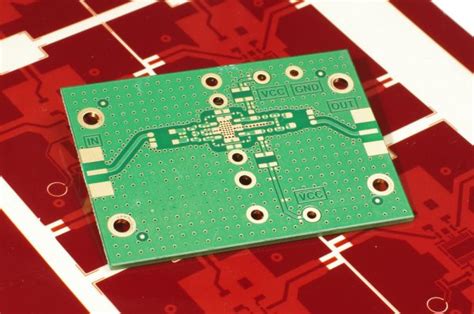
Multilayer FPC Replaces Traditional Harnesses
When designing next-generation aerospace systems, PCB manufacturing companies face a critical challenge: balancing performance with weight constraints. Traditional wiring harnesses, while reliable, add significant bulk—a problem solved by multilayer flexible printed circuits (FPCs). These ultra-thin, lightweight alternatives integrate power distribution, signal routing, and thermal management into a single, cohesive structure. By consolidating over 50 circuits across a 26-meter span, engineers eliminate miles of copper cabling, achieving up to 60% weight reduction in critical systems.
For solar-powered UAVs, where every gram impacts flight endurance, this innovation reshapes PCB manufacturing cost dynamics. While traditional harnesses require labor-intensive assembly, FPCs streamline production through scalable, automated processes. The shift also reduces maintenance complexity—fewer connectors mean fewer failure points. However, scaling such solutions demands expertise from PCB manufacturing business leaders specializing in aerospace-grade materials and precision layering.
The transition to multilayer FPCs isn’t just about shedding weight; it’s about reimagining how systems integrate. As wing designs grow more aerodynamic, circuits must adapt to curved surfaces without compromising reliability—a feat only possible with advanced flexible substrates. This evolution underscores why modern aerospace projects increasingly prioritize partnerships with PCB manufacturing innovators capable of merging durability with unprecedented efficiency.
Record-Setting Flexible Circuit for UAVs
When designing next-generation solar-powered drones, every gram matters. That’s why breakthroughs in PCB manufacturing are redefining what’s possible for aerospace systems. Trackwise’s 26-meter flexible printed circuit (FPC) isn’t just a technical marvel—it’s a strategic solution for UAVs requiring extreme weight efficiency. By replacing bulky traditional wiring harnesses with a single multilayer FPC, over 50 independent circuits now integrate seamlessly into wing structures, slashing system weight by 60% while maintaining robust power and signal distribution.
For PCB manufacturing companies, projects like this highlight the balance between innovation and scalability. Producing such lengthy, high-density circuits demands precision in material selection and layer alignment—factors that influence PCB manufacturing cost but pay dividends in performance. The FPC’s ability to conform to complex wing contours without sacrificing reliability underscores why aerospace leaders are pivoting to advanced PCB manufacturing business models. By prioritizing flexibility and weight savings, these circuits aren’t just breaking records—they’re setting a new standard for sustainable UAV design.

Solar-Powered UAVs Adopt 26-Meter FPC
When designing high-efficiency solar UAVs, reducing weight while maintaining performance is a critical challenge. By integrating a 26-meter flexible printed circuit (FPC), engineers now bypass bulky traditional wiring harnesses, achieving a transformative shift in power and signal distribution across aircraft wings. This innovation, pioneered by PCB manufacturing companies, replaces over 50 discrete circuits with a single multilayer FPC, slashing system weight by 60%—a game-changer for solar-powered flight endurance.
The extended length of the FPC highlights advancements in PCB manufacturing techniques, where precision layering and material flexibility are pushed to new limits. For UAV manufacturers, lowering PCB manufacturing cost without compromising reliability remains pivotal. Here, aerospace-grade polymers and optimized production workflows enable such record-breaking circuits to be economically viable. As solar UAVs demand lighter, more compact systems, the PCB manufacturing business evolves to prioritize ultra-thin, high-density designs that withstand environmental stressors like temperature fluctuations and mechanical fatigue.
This leap in FPC technology underscores how strategic partnerships with specialized PCB manufacturing providers can redefine aerospace engineering. By consolidating wiring into a unified flexible circuit, you not only reduce weight but also minimize points of failure—key for missions requiring uninterrupted solar energy harvesting and data transmission. The shift toward such solutions signals a broader industry trend: leveraging advanced materials and scalable fabrication methods to meet tomorrow’s aviation challenges.
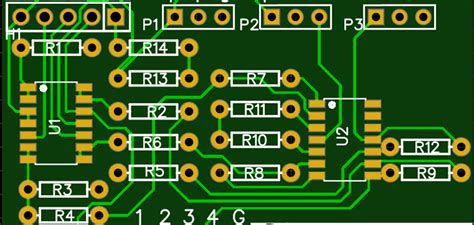
Trackwise FPC Enables Lighter Aircraft Systems
When designing modern aircraft systems, reducing weight without compromising performance is a critical challenge. PCB manufacturing companies like Trackwise are addressing this by reimagining how circuits integrate into aerospace applications. Their 26-meter multilayer FPC replaces bulky traditional wiring harnesses, slashing system weight by up to 60%—a breakthrough that aligns with the growing demand for energy-efficient, solar-powered UAVs. By consolidating over 50 circuits into a single flexible design, this innovation streamlines power and signal distribution across wingspans, eliminating the need for hundreds of individual wires.
For aerospace engineers, the shift to advanced FPCs isn’t just about shedding weight—it’s about rethinking PCB manufacturing cost and scalability. Traditional harnesses require labor-intensive assembly, driving up production time and expenses. In contrast, flexible printed circuits are precision-engineered in controlled environments, reducing material waste and long-term maintenance needs. This efficiency makes them ideal for UAVs, where every gram impacts flight endurance and payload capacity.
The strategic advantage extends beyond technical specs. By adopting such innovations, PCB manufacturing businesses position themselves as leaders in a competitive market, offering solutions that balance performance with sustainability. Whether optimizing solar UAVs or next-gen aircraft, the focus on lightweight, high-density circuitry underscores how modern PCB manufacturing is reshaping aerospace design paradigms.
50 Circuits Transform Wing Signal Distribution
When designing next-gen solar UAVs, PCB manufacturing plays a pivotal role in redefining how systems handle power and data. Traditional wiring harnesses, bulky and prone to failure, are now being replaced by ultra-thin multilayer flexible printed circuits (FPCs). By integrating over 50 independent circuits into a single 26-meter FPC, PCB manufacturing companies like Trackwise have eliminated the need for hundreds of individual wires. This leap in design consolidates signal distribution across the UAV’s wingspan while slashing PCB manufacturing cost through optimized material usage and reduced assembly complexity.
The shift to FPCs isn’t just about weight savings—it’s a strategic overhaul. Each circuit layer in the FPC handles distinct functions, from power delivery to sensor communication, ensuring precise signal integrity even under extreme conditions. For aerospace engineers, this means simplified maintenance and enhanced reliability, as fewer connectors reduce points of failure. Moreover, the scalability of this approach allows PCB manufacturing business models to prioritize modular designs, enabling rapid customization for varying UAV payloads.
By merging high-density circuitry with lightweight materials, this innovation addresses a critical pain point: balancing performance with energy efficiency. The result? A wing structure that’s not only lighter but also smarter, capable of supporting advanced solar-powered systems without compromising durability.
Advanced FPC Cuts UAV System Weight 60%
When designing solar-powered UAVs, every gram matters. Traditional wiring harnesses—bulky, rigid, and prone to failure—often limit payload capacity and flight endurance. Now, imagine replacing miles of copper cables with a single flexible printed circuit (FPC) that integrates over 50 independent circuits across a 26-meter span. This isn’t hypothetical: PCB manufacturing companies are achieving exactly that, slashing system weight by 60% while enhancing reliability.
The breakthrough lies in multilayer FPC technology, which consolidates power distribution, signal transmission, and structural support into one ultra-thin component. For aerospace applications, this means fewer points of failure and simplified assembly—critical for maintaining performance in extreme conditions. While PCB manufacturing costs historically deterred such innovations, advancements in scalable production methods now make these solutions viable even for specialized use cases like UAVs.
For businesses in the PCB manufacturing business, this shift underscores a growing demand for lightweight, high-density circuits. By optimizing material selection and layer stacking, manufacturers can balance durability with weight savings—a key factor as industries prioritize energy efficiency. Whether you’re retrofitting existing systems or designing next-gen aircraft, the move toward integrated FPCs highlights how strategic PCB manufacturing choices can redefine what’s possible in aerospace engineering.
Conclusion
As aerospace innovation accelerates, advancements in PCB manufacturing are reshaping how engineers approach system design. The integration of record-breaking flexible circuits into solar UAVs highlights a critical shift: traditional wiring methods are being phased out in favor of lightweight, high-density alternatives. For PCB manufacturing companies, this underscores the growing demand for solutions that balance precision with scalability—especially when PCB manufacturing cost becomes a decisive factor for aerospace projects.
By replacing bulky harnesses with multilayer FPCs, you achieve not just weight savings but also enhanced reliability in power and signal distribution. This breakthrough demonstrates how optimizing PCB manufacturing business models around specialized applications—like UAV wings—can unlock transformative efficiencies. Imagine streamlining 50+ circuits across a 26-meter span while slashing system weight by 60%: such feats redefine what’s possible in modern avionics.
The lesson? Prioritizing innovation in flexible circuit design isn’t just about keeping pace—it’s about leading the next wave of aerospace engineering. For those navigating this space, aligning with partners who master both PCB manufacturing complexity and cost-effective scalability will prove indispensable.
Frequently Asked Questions
How does flexible printed circuit (FPC) technology benefit aerospace applications?
FPCs enable significant weight savings—up to 60% compared to traditional wiring—by replacing bulky harnesses with slim, multilayer designs. This is critical for solar-powered UAVs, where every gram impacts flight efficiency and energy consumption.
What makes PCB manufacturing companies like Trackwise ideal for aerospace projects?
Specialized PCB manufacturing expertise allows companies to produce ultra-long, high-reliability circuits (e.g., 26-meter FPCs) that meet stringent aerospace standards. Their ability to integrate 50+ circuits into a single flexible layer streamlines wing signal distribution while reducing assembly complexity.
Does advanced PCB manufacturing cost more than conventional wiring systems?
While initial PCB manufacturing business investments in custom FPCs may be higher, long-term savings arise from reduced maintenance, lighter aircraft systems, and improved operational efficiency. For solar UAVs, the ROI is amplified by extended flight durations and payload capacity.
Can FPCs withstand harsh environmental conditions?
Yes. Aerospace-grade FPCs undergo rigorous testing for temperature extremes, vibration, and UV exposure. This ensures reliability in solar UAV operations, where consistent performance is non-negotiable.
Explore Custom PCB Solutions for Your Projects
For tailored PCB manufacturing services that balance innovation and cost-efficiency, please click here to connect with experts specializing in high-performance flexible circuits.




